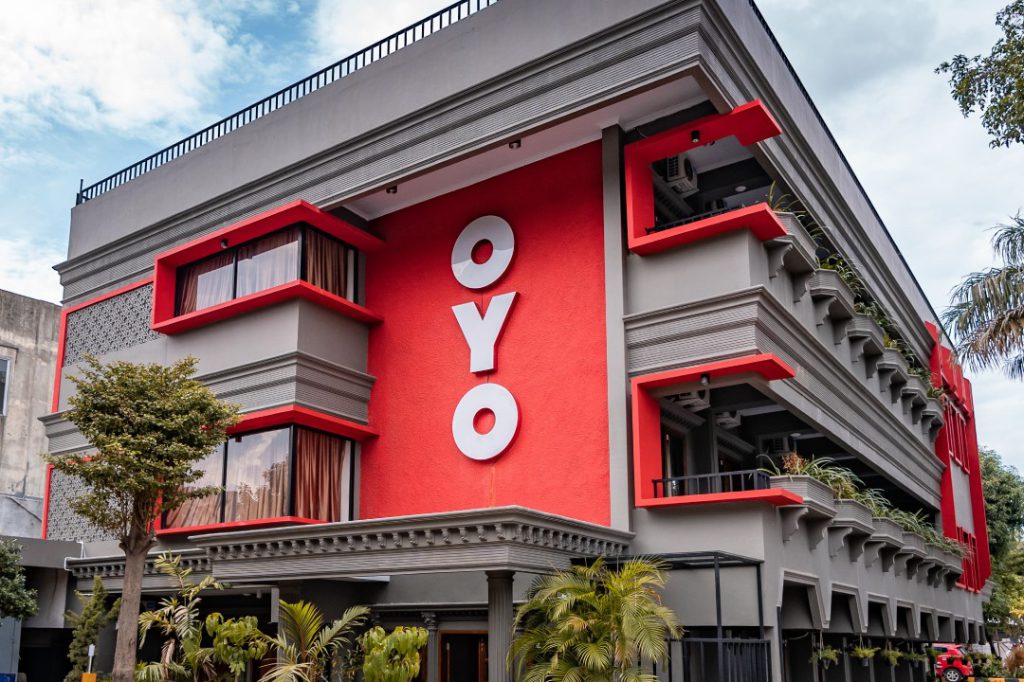Oyo Axes Staff and Pares Back Ambitions: Where Does It Go From Here?

Photo Credit: After layoffs and less ambitious plans, Oyo faces new challenges. Oyo Rooms
Skift Take
Those unbelievable expansion numbers that Ritesh Agarwal used to rattle off? We won’t be hearing them again in 2020. The Oyo founder is forced to think of business sustainability. Let’s see if he’s adept at it.
Oyo’s founder Ritesh Agarwal on Monday sent an internal note to all its India employees confirming rumors that surfaced recently that the budget hotel chain was laying off staff.
He also offered a new roadmap for the embattled company for 2020 and beyond. The priorities outlined are telling on where Oyo has gone wrong, and beg the question: Will this go down as a dark chapter in Oyo’s history, or will Oyo be history?
The note did not say how many staff would be let go, but an Oyo insider told Skift “at the moment it would be over 1,000 in India, 600 in China, and very few in other markets.”
Oyo employs some 10,000 staff in India, its biggest revenue-generating country, and 12,000 employees in China, its second biggest market.
“The actual details are still being discussed,” said the insider, adding that the redundancies are “in progress.”
Oyo’s spokesperson declined to comment when approached by Skift.
In his note, Agarwal admitted that “growing at the pace at which Oyo has in the past few years, we sometimes went ahead of ourselves.”
“This year we are taking steps to address it,” he said.
“One of the implications of the new strategic objectives for 2020, is that, like the leadership team, we will reorganize more teams across businesses and functions. And this means that, unfortunately, some roles at Oyo will become redundant as we further drive tech-enabled synergy, enhanced efficiency and remove duplication of effort across businesses or geographies. As a result, we are asking some of our impacted colleagues to move to a new career outside of Oyo.
“This has not been an easy decision for us. We are doing everything we can to ensure that our outgoing colleagues receive as much assistance and support as possible through this transition,” said Agarwal.
Company restructures aren’t unusual, and layoffs are an inevitable byproduct of these reorganizations. Oyo’s problem however is that it isn’t a bloated organization but an expansion-at-all-cost strategy — of a sector that global hotel chains would already have done if it was possible.
Proving Others Right
Oyo is proving what global hotel chains have known all along: that it is a huge task to organize the unorganized one and two-star and mom-and-pop low budget accommodations in any market, each with its own cultures and dynamics, into a consistent hotel brand. Let alone on the scale and global markets that Oyo is doing. Chains have been observing Oyo to see if the upstart could do it.
Read A Deep Dive into OYO 2019: an Update by Skift Research
Agarwal’s new strategic objectives say it all. Right at the top is his acknowledgment of a need to balance speed of growth with operational capabilities, which Oyo hasn’t. Another is the need to drive a “uniform” adoption of its technology stack across different geographies (which suggests inconsistencies in implementing it), and moving more than 90 percent of Oyo hotels to a satisfaction rating of at least seven out of 10 (which means few Oyo hotels have achieved high ratings).
There’s also a focus on profitability by sticking to core businesses, profitable locations and buildings. Last but not least is training and governance, “enabling staff with the right tools to drive productivity, consistency and governance, while building a high-performing and employee-first work culture.”
Oyo went from being a media darling to a media pariah overnight, a spectacular case study of how a relentless pursuit of growth in this sector brings with it a vicious circle of ills, ranging from the inability to pay hotel owners and tactics to bump up room inventory, to fraud by staff and even the cultural problem of how its model is perceived as undesirable in certain communities as it provides rooms to couples and prostitutes.
In the financial year ending March 2019, Oyo is said to have chalked up losses of around Rs 2,400 crores ($340 million), six times more than the previous financial year. With a public listing eyed in 24 to 30 months, it is under enormous pressure to clean up its act, restore its battered image, and be profitable.
Short-term Move
But cutting staff will only exacerbate its woes, pointed out a former partner of Oyo who spoke to Skift on the condition of anonymity.
“SoftBank wants it to cut losses, thus the firing has started. But that’s a pretty short-term view, as firing people is only going to impact hotel operations further. If Oyo says it won’t impact operations, then why did it hire these people in the first place?” he said.
The source said that while Oyo is “fantastic” in brand building, its biggest problem has been in operations and training, which is necessary if it wants to be a hotel chain and not just an online budget hotel aggregator.
“The hotel business is a human touch business. But achieving operational excellence and doing training is expensive and you need owners to cooperate. But these are small owners who have neither the hotelier mindset nor the wherewithals to improve operations and do training,” he said.
The source gave China as an illustration. “Oyo’s China business is in fact not shaping up well, because Oyo competes with the likes of Home Inns in tier one to tier five cities. There are many strong, standardized brands in the sector in China, whereas Oyo picks those mom-and-pop hotels, and they really don’t focus on changing the product and improving operations,” he said.
The source sees that Oyo will “dry down” to become just an online budget hotel aggregator in the next 36 months. “I don’t treat it as a hotel brand because Oyo’s on the ground operations is still not significant; most of their properties do not even have the proper approvals in India,” he said.
According to a report in The New York Times on Monday, Oyo has cut at least 65,000 rooms in India alone.
However, it is unclear if that means Oyo is cleaning up the portfolio, which could be a positive move. Oyo has around 270,000 rooms in 500 cities in the country.
Meanwhile, you can read Agarwal’s full internal note to staff here.
[gview file="https://skift.com/wp-content/uploads/2020/01/Final_RA-Intenal-Integrated-Note-for-Jan-13-2020.pdf"]

